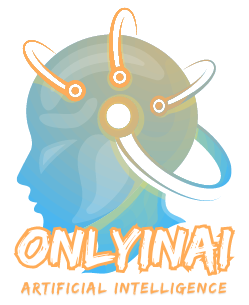A recent report by the MIT Technology Review says 2024 will be a big year for artificial intelligence (AI). Last year, we saw huge leaps in chatbots and AI models that can handle text, images, and audio. Regulators started to tackle issues like bias and copyright in AI, too.
Now, we’re moving towards making powerful AI easier for everyone to use. This means creating AI apps without needing to know how to code. It’s all about making AI more accessible and flexible for regular folks.
Key Takeaways
- Advancements in large language models and multimodal AI for text, images, and video
- Customized AI solutions for enterprises through API-driven services and localized data pipelines
- Growing concerns around “AI hallucination” and the need for mitigation techniques
- Increasing focus on ethical AI principles and the responsible development of AI systems
- Emergence of AI-powered virtual agents and digital humans for enhanced user experiences
The Next Wave of Generative AI
The future of artificial intelligence is exciting with new advancements in large language models and multimodal AI. These technologies are changing how we interact with and create digital content.
Advancements in Large Language Models
Recent breakthroughs in LLMs, like OpenAI’s GPT-4 and Google DeepMind’s Gemini, show amazing skills in understanding and creating human-like text. They can now do tasks that only humans could do before, from writing stories to making code. As LLMs get better, they will be used in many areas, changing how we talk, work together, and express ourselves.
Multimodal AI for Text, Images, and Video
The next big thing in generative AI is multimodal models that work with text, images, and video. These systems can make content that mixes different types of media. This could lead to new uses like personalized home listings, interactive learning tools, and fun entertainment.
But, these powerful AI models face big challenges like being reliable, avoiding bias, and keeping safe from threats. As generative AI grows, finding a balance between new ideas and responsible use is key. This will help us use these technologies to their fullest.
Customized AI for Enterprises
As AI becomes more popular, companies want AI that fits their specific needs. They look for customized AI to solve their unique problems. This trend is growing fast, with companies adapting AI to fit their own needs.
API-driven AI and Microservices
API-driven AI and microservices are becoming big in this area. They let companies use AI through APIs, making it easy to add to their systems. This way, companies can add new AI features without needing a lot of AI knowledge.
Localized Models and Data Pipelines
For companies, making AI work well means using localized models and data pipelines. Standard AI might not work for every company’s needs. By creating AI models and data pipelines just for them, companies can get better results that really help their business.
| Feature | Benefit |
|---|---|
| API-driven AI | Seamless integration of advanced AI capabilities into existing systems |
| Microservices | Modular, flexible, and cost-effective AI deployment |
| Localized AI models | Tailored solutions that address unique enterprise needs and data sources |
| Customized data pipelines | Improved data processing and analysis for more accurate AI-powered insights |
By following these trends in enterprise AI, companies can make the most of AI. This leads to better productivity, efficiency, and new ideas for their business.
Top AI trends in 2024
Looking ahead to 2024, the AI world is set for big changes. Experts say the top AI trends will shape tech next year. These trends include everything from multimodal AI to worries about AI hallucination and misinformation.
One big trend is customizing enterprise AI. Companies want solutions that fit their specific needs. This means more API-driven AI and localized data pipelines. These will help businesses use AI better.
Shadow AI is another big thing coming. It will make companies think about how to use AI right. Plus, making AI models better with transfer learning and pre-trained models will lead to new ideas in digital humans and digital twins.
As we move forward, we’ll see more powerful virtual agents and AI for small businesses. 2024 will also explore quantum AI, which could change how we process data and solve problems.
These artificial intelligence trends show how AI can change things for everyone. By keeping up with these changes, we can use machine learning trends to innovate and shape tech’s future.
| AI Trend | Description |
|---|---|
| Customized Enterprise AI | Businesses will seek tailored AI solutions to address their unique challenges, driving the development of API-driven AI and localized data pipelines. |
| Shadow AI and Corporate Policies | The emergence of shadow AI will prompt companies to reevaluate their corporate policies and ensure responsible AI deployment. |
| Ease of Model Optimization | Transfer learning and pre-trained models will make it easier to optimize AI models, enabling advancements in digital humans and digital twins. |
| AI for Solopreneurs and SMBs | The integration of AI will empower solopreneurs and small-to-medium businesses, expanding the reach of this technology. |
| Quantum AI | Researchers will explore the potential of quantum AI, offering new possibilities in data processing and problem-solving. |
More Powerful Virtual Agents
The future of virtual agents is changing fast. Thanks to new tech in natural language processing and multimodal skills, these digital helpers can do more. They’re becoming key to how we use technology, making our interactions smoother and more like talking to a person.
New advances in conversational AI are leading the way. Virtual agents now understand and respond to our words better, thanks to advanced algorithms. This means they can help us with a variety of tasks, making them more useful and helpful.
These agents can now handle text, images, and even audio, making them more powerful. They can understand and answer complex questions, offering better help in many areas. This change is set to change how we do things, from helping customers to managing our daily tasks.
But, for virtual agents to succeed, they must gain our trust. They need to be seen as reliable and protect our privacy. As they become a bigger part of our lives, their dependability will be key.
The future looks bright for virtual agents as they keep getting better. They’re set to play a big role in how we interact with technology. We can look forward to seeing them make a big impact in many areas of our lives.
AI Hallucination and Misinformation Concerns
Artificial intelligence (AI) is evolving fast, bringing new challenges. AI hallucination and misinformation are big concerns now. Deepfakes and AI-generated content can look very real, which worries us, especially in political elections and big events.
This issue is serious. We’ve seen how AI misinformation can change public opinion and affect election results in many countries. It shows we need to act fast to fix this problem.
Techniques to Track and Mitigate AI-Generated Content
There are efforts to fight AI-generated content. Techniques like watermarking, improving social media moderation, and making new laws are being looked at. These could help stop the spread of false information.
- Watermarking: Adding a digital signature to AI content could help us check if it’s real. This makes it harder for bad people to use it wrongly.
- Content Moderation: Social media is getting better at checking content. They use AI to spot and mark fake or made-up stuff.
- Regulatory Frameworks: People making laws and tech leaders are working together. They aim to make rules that stop AI misinformation. This will make things more open and responsible.
These solutions are still new, but next year will show how well they work. We all need to stay alert and work together to keep our information safe.
Shadow AI and Corporate Policies

Technology is always changing, bringing us new things like “shadow AI.” This is when employees use AI systems or algorithms without telling the IT department. They do this to make their work better and more efficient. But, they might not know about the legal and ethical issues this can cause for the company.
Shadow AI has both good and bad sides. It shows how creative and resourceful employees can be when using new tech. But, it also brings risks to the company. These risks include not following the company’s rules, security, or ethical standards.
To deal with this, companies need to make clear corporate AI governance policies. These policies should tell employees how to use AI in a way that’s right for the company. They should cover how to use, watch over, and control AI systems.
With strong AI policies, companies can reduce the risks of shadow AI. They can also create a work environment that’s open and trustworthy. This lets employees work with the IT department to use AI to make their work better and help the company succeed.
As AI becomes more common, companies need to be careful and take action against shadow AI. By having a clear plan for corporate AI governance, companies can use AI’s benefits. They can also keep control and follow the law.
Ease of Model Optimization
In the fast-changing AI world, making models better has become easier and faster. No more complex, time-consuming model optimization. Now, powerful AI tools and platforms make improving AI models simple. This has changed how developers work, making their models better and more efficient.
Transfer Learning and Pre-trained Models
Transfer learning and pre-trained models have changed the game. They let developers start with existing models’ knowledge. This saves time and effort, making AI model development faster. This method speeds up model optimization and helps create more advanced AI solutions easily.
Hyperparameter tuning is now easier and more precise. This lets developers fine-tune their models better. Together with transfer learning and pre-trained models, AI model development has entered a new era. Now, model optimization is a key part of making AI, not a big challenge.
| Technique | Description | Benefits |
|---|---|---|
| Transfer Learning | Leveraging knowledge and capabilities from existing models to jumpstart AI model development. | Accelerates the model optimization process, enables more sophisticated AI solutions. |
| Pre-trained Models | Using models that have been trained on large datasets to reduce the need for training from scratch. | Saves time and resources, allows for more advanced AI capabilities to be developed. |
| Hyperparameter Tuning | The process of fine-tuning model parameters to improve performance and efficiency. | Enables greater precision and efficiency in the model optimization process. |
The future of AI will see even more ease in making models better. This will drive innovation and speed up the use of advanced AI in many areas.
Digital Humans and Digital Twins
In the fast-changing tech world, digital humans and digital twins are becoming more popular. Digital humans are AI-powered virtual beings that act like humans, used in customer service, healthcare, education, and entertainment. Digital twins are virtual copies of real objects or systems, mainly used in industries to improve operations.
The digital human market is set to hit $125 billion by 2035. This shows how much we want virtual assistants and avatars that act like us. These digital beings can talk naturally, understand what we mean, and give us personalized experiences. This is changing how we use technology.
The digital twin market is also growing fast, with a 61.3% CAGR to 2028. It’s expected to reach $110.1 billion. This is because companies are using these virtual copies to make their work better and make smarter decisions.
| Metric | Digital Humans | Digital Twins |
|---|---|---|
| Market Size (2028) | $125 billion | $110.1 billion |
| CAGR (2021-2028) | N/A | 61.3% |
| Key Industries | Customer Service, Healthcare, Education, Entertainment | Industrial Applications, IoT, Simulations |
The digital revolution is changing our world fast. Digital humans and digital twins are making a big impact. They’re changing how we use technology, improve industrial processes, and create new experiences.
These new solutions are leading us to a future where the digital and real worlds blend together. This opens up new possibilities for both businesses and people.
AI for Solopreneurs and SMBs

As a solopreneur or small business owner, I know the challenges we face. We have limited resources and tight budgets. We also lack specialized expertise. But, AI for small businesses and AI for solopreneurs have changed the game. They give us access to advanced technologies at a lower cost.
AI-powered automation helps us do our daily tasks faster. It lets us focus on important, strategic work. This makes us more efficient and helps us give our clients a better experience.
AI for cost reduction is also key for small businesses. It helps us make smart decisions and save money. This is vital when every dollar matters.
I’m thrilled about the future of AI for small businesses and AI for solopreneurs. With the right tools, we can compete with big companies. We can grow and succeed in new ways.
| Key AI Applications for Solopreneurs and SMBs | Benefits |
|---|---|
| Automated Customer Service | Improved response times, 24/7 availability, and enhanced customer satisfaction |
| Intelligent Scheduling and Task Management | Optimized workflows, reduced administrative overhead, and increased productivity |
| Data-Driven Decision Making | Informed strategic planning, cost optimization, and identification of growth opportunities |
As a solopreneur or small business owner, I’m excited about AI-powered automation and AI for productivity. These technologies help us compete with big companies. They open up new chances for growth and success.
Quantum AI
The world of technology is changing fast, and Quantum AI is leading the way in how we solve problems and learn. Unlike traditional AI, which uses just 0s and 1s, Quantum AI uses quantum computing. This lets it handle huge amounts of data at once.
At the heart of Quantum AI is the power of qubits to be in more than one state at a time. This is called superposition. With superposition and entanglement, Quantum AI can solve complex problems much faster and more efficiently. It can look at many solutions at once, which could lead to big advances in quantum machine learning, AI optimization, and AI algorithms.
The quantum AI market is set to grow a lot, with a forecasted value of USD 3,900 million by 2033. As this tech gets better, we’ll see new things possible in quantum computing and artificial intelligence.
| Key Quantum AI Developments | Potential Impact |
|---|---|
| Improved AI optimization through quantum-inspired algorithms | Faster and more efficient problem-solving for complex optimization tasks |
| Advancements in quantum machine learning techniques | Enhanced accuracy and speed in pattern recognition and data analysis |
| Exploration of quantum AI algorithms for specific applications | Breakthroughs in areas like cryptography, drug discovery, and climate modeling |
The quantum AI field is growing, bringing together quantum computing and artificial intelligence. This could open up new ways to solve problems, make decisions, and discover new things. The future of Quantum AI looks very promising, with big potential to change how we tackle complex challenges.
Augmented Working with AI
The way we work is changing fast, thanks to AI. Now, AI helps us work smarter by automating tasks and improving how we do things. This change, called “Augmented Working with AI,” makes us more efficient and effective at work.
A Deloitte survey found that 70% of companies are using or looking into AI. This shows how big of a deal AI is becoming. It’s changing how we handle our daily tasks.
AI-powered automation makes simple tasks easier, so we can spend more time on complex tasks. AI-driven analytics give us insights and advice, helping us make better choices. This leads to AI-enhanced productivity.
Working together with augmented intelligence and humans is making work more efficient and innovative. As companies keep adopting this trend, the future of work will be shaped by humans and AI working together.
Conclusion
Looking back at the amazing AI progress we’ve seen, I feel really excited for the future. 2024 is set to be a big year. Researchers and companies are working hard to make generative AI a big part of our lives.
While the latest AI models are impressive, I think the real game-changers are in governance, middleware, training, and data pipelines. These areas will help make sure AI is safe, green, and available to everyone.
The AI world is moving fast, so it’s important to keep up with the latest AI trends summary, AI technology outlook, and insights on the future of AI. By staying informed, we can get ready for the big changes and chances that are coming our way.


